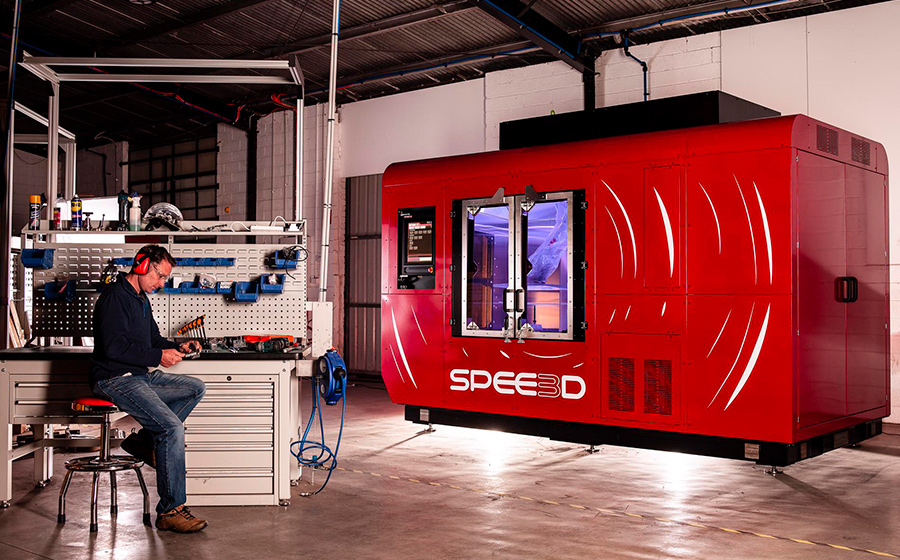CRC Projects – Game-changing metal 3D printing technology

SPEE3D's metal 3D printing technology enables exceptionally fast and very low-cost production of metal parts. This technology is set to revolutionise industrial production in remote areas by allowing metal parts to be produced on demand.
This has allowed the company to transform its technology into a functional portable solution to replace the need for a foundry (a factory that produces metal castings) to serve businesses operating in remote regions of Australia. This includes remote communities, offshore oil and gas rigs, mine sites, outback stations and logistics hubs. It provides an alternative when replacement parts are not locally available, reducing downtime which can cost up to a million dollars per day in some industries.
SPEE3D’s cutting-edge technology uses a novel metal deposition technique, taking advantage of kinetic energy from a rocket engine to promote bonding of metal particles. It uses a cold spray technique that allows for higher process rates with less expensive powders, significantly reducing the cost and time required for 3D printing.
Company beginnings
Company co-founders Byron Kennedy (CEO) and Steve Camilleri (Chief Technical Officer), established their SPEE3D start-up in 2014, to get their one-of-a-kind 3D metal printer into the marketplace.
SPEE3D has sold its machines and collaborated with three universities to further develop the technology and applications with different metals.
CRC-P collaboration
With the support of a CRC-P (Cooperative Research Centres Project) grant, SPEE3D began a new collaboration with Charles Darwin University’s (CDU) Advanced Manufacturing Alliance (AMA) and PW Baxter & Associates to explore the types of industrial applications suited to their technology.
"The CRC-P program has helped us leverage our market knowledge and the spectrum of applications for the technology by connecting us with academics who can rigorously investigate where the technology can best be applied."
Camilleri cites SPEE3D’s recent work with the Australian Army as one of their proudest achievements to date. This included deploying a printer out in the field, printing parts for case studies and receiving attention at a worldwide level.
SPEE3D partnered with the AMA and CDU to deliver this program with soldiers from the Australian Army’s 1st Brigade training in 3D printing at CDU since February 2020. The program aims to significantly increase unique parts available to the Army compared to what the regular supply chain can provide. “We wouldn't have got the kind of visibility we needed to get a project like this off the ground without the help of the CRC-P program,” he says.
Industry impact
The CRC-P program also enabled SPEE3D to better understand two major target markets for their technology; first one being parts manufacturing (replacing cast parts) and the second, potentially the larger prospective market opportunity, is for companies that need to print ‘parts on demand’. Most of the current CRC-P work is focused on this particular market segment. The CRC-P grant helped the company identify the defence industry as their primary customer for this market.
The long-term vision for the company is to create an alternative supply chain solution for industry.
CRC-P grants support short term industry-led collaborations between industry entities and research organisations to develop important new technologies, products and services.
We use cookies to give you a better experience on our website. Learn more about how we use cookies and how you can select your preferences.